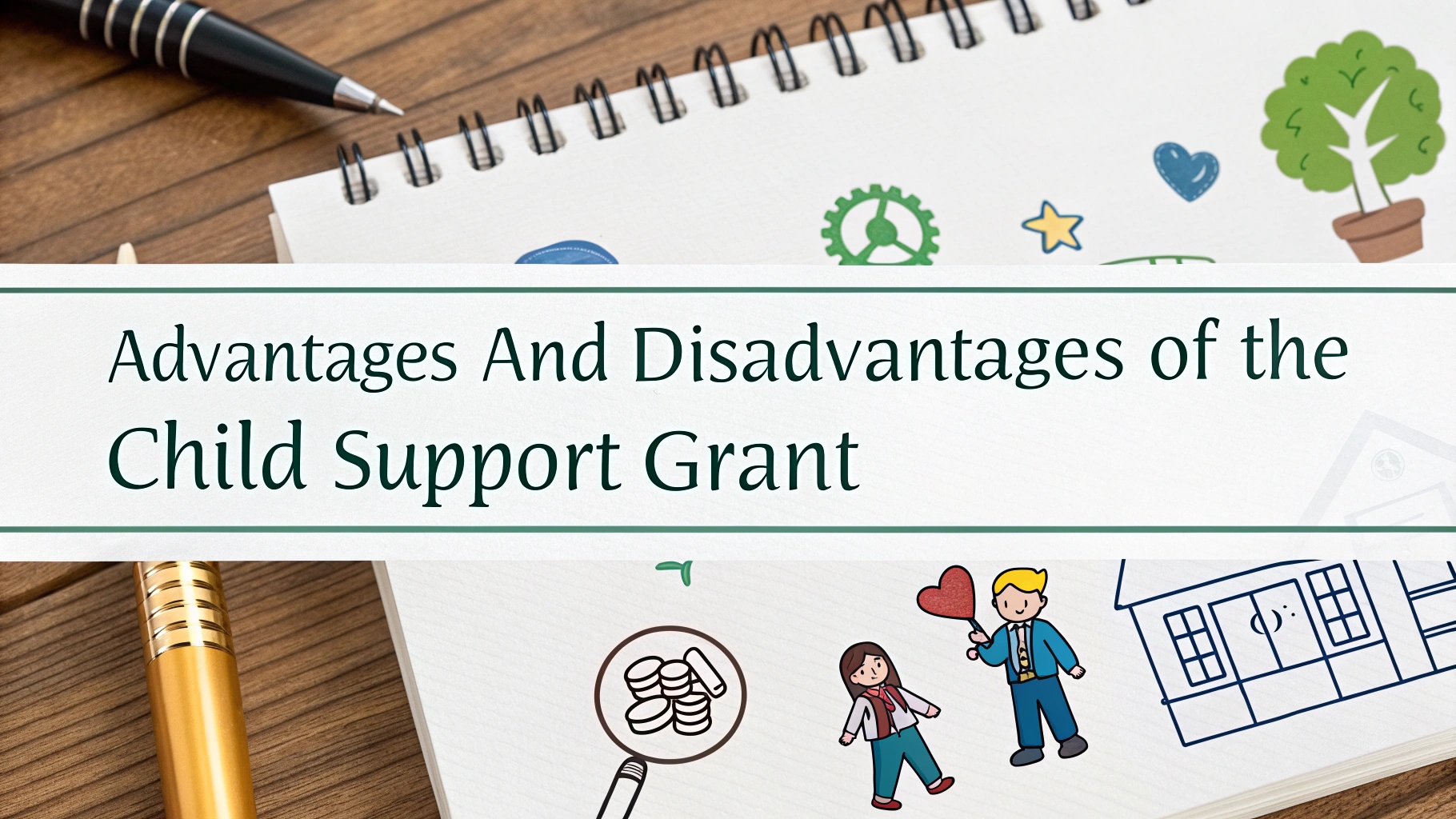The Child Support Grant is a crucial social assistance program aimed at supporting low-income families in providing for their children’s basic needs. In South Africa, the grant is a lifeline for millions of households struggling with financial hardships. While the grant has numerous benefits, it also has its challenges. This article explores the advantages and disadvantages of the Child Support Grant to help understand its impact on beneficiaries and society.
Advantages of a Child Support Grant
1. Alleviating Poverty
One of the most significant advantages of the Child Support Grant is its role in reducing poverty. Many families in South Africa live below the poverty line, and the grant helps provide essential financial support for raising children. The money assists in purchasing food, clothing, and other necessities, thereby improving the quality of life for vulnerable children.
2. Improving Nutrition and Health
With the grant, many caregivers can afford better food for their children, reducing the prevalence of malnutrition and related health conditions. Studies have shown that children from grant-receiving households have better access to healthcare, as caregivers can afford medical expenses such as clinic visits and vaccinations.
3. Encouraging School Attendance
The Child Support Grant also contributes to better educational outcomes. Caregivers use the money to buy school uniforms, stationery, and other educational materials, ensuring that children can attend school regularly. Access to education helps break the cycle of poverty in the long term by providing children with better opportunities for the future.
4. Supporting Single Mothers and Guardians
Many single mothers and guardians struggle to meet their children's needs without financial support from the other parent. The grant provides much-needed assistance, helping them manage childcare expenses without having to rely on inconsistent or absent child maintenance payments.
5. Boosting Local Economies
When families receive financial assistance, they spend the money on essential goods and services, stimulating local economies. Small businesses, such as grocery stores and school supply shops, benefit from the increased spending power of grant recipients.
6. Promoting Social Welfare and Reducing Inequality
By assisting underprivileged families, the Child Support Grant contributes to reducing social inequality. It ensures that children from low-income backgrounds have similar opportunities as their peers from more privileged backgrounds, promoting fairness and social cohesion.
7. Encouraging Responsible Parenthood
Some argue that the grant encourages responsible parenting by giving caregivers the means to take better care of their children. It can also reduce desperation that may lead parents to engage in risky behaviours such as crime or child labour to support their families.
Disadvantages of a Child Support Grant
1. Dependency on Government Assistance
One of the main criticisms of the Child Support Grant is that it can create dependency on government assistance. Some caregivers may rely solely on the grant rather than seeking employment or additional income sources, which can perpetuate the cycle of poverty.
2. Potential for Misuse of Funds
There are cases where caregivers misuse the grant money instead of spending it on children’s needs. Some recipients may prioritize personal expenses such as alcohol, gambling, or luxury items instead of investing in the child’s well-being.
3. Strain on Government Resources
Providing Child Support Grants to millions of beneficiaries requires substantial government funding. The high costs associated with maintaining social welfare programs can strain national resources, potentially leading to increased taxes or reduced funding for other critical services like healthcare and infrastructure.
4. Encouraging Childbirth for Financial Gain
There is concern that some individuals may have more children than they can afford in order to receive additional grant money. This can lead to further financial strain on families and the government, as well as contribute to overpopulation in poverty-stricken areas.
5. Difficulty in Ensuring Accountability
While the grant is meant to benefit children, ensuring that the funds are used appropriately is challenging. The government has limited oversight over how the money is spent, making it difficult to track whether children are actually benefiting from the financial support.
6. Not Enough to Cover All Child Expenses
Although the grant provides some relief, the amount is often insufficient to cover all the expenses associated with raising a child. The cost of food, education, healthcare, and other essentials continues to rise, and many families still struggle to make ends meet despite receiving the grant.
7. Fraud and Corruption
There have been cases where individuals manipulate the system to receive grants fraudulently. This includes falsifying documents or continuing to claim grants for deceased or non-existent children. Such fraud diverts resources away from genuine beneficiaries and undermines the integrity of the social welfare system.
Conclusion
The Child Support Grant is a vital tool in reducing poverty and improving the lives of many children in South Africa. It helps provide financial relief, improves access to education and healthcare, and reduces social inequality. However, it also presents challenges, such as dependency, misuse of funds, and strain on government resources.
To maximize the benefits of the grant while minimizing its disadvantages, there is a need for better oversight, financial literacy programs for beneficiaries, and policies that promote self-sufficiency among recipients. Ultimately, the Child Support Grant remains a critical part of social welfare, but it should be complemented with other economic and social development initiatives to ensure long-term sustainability and growth.
